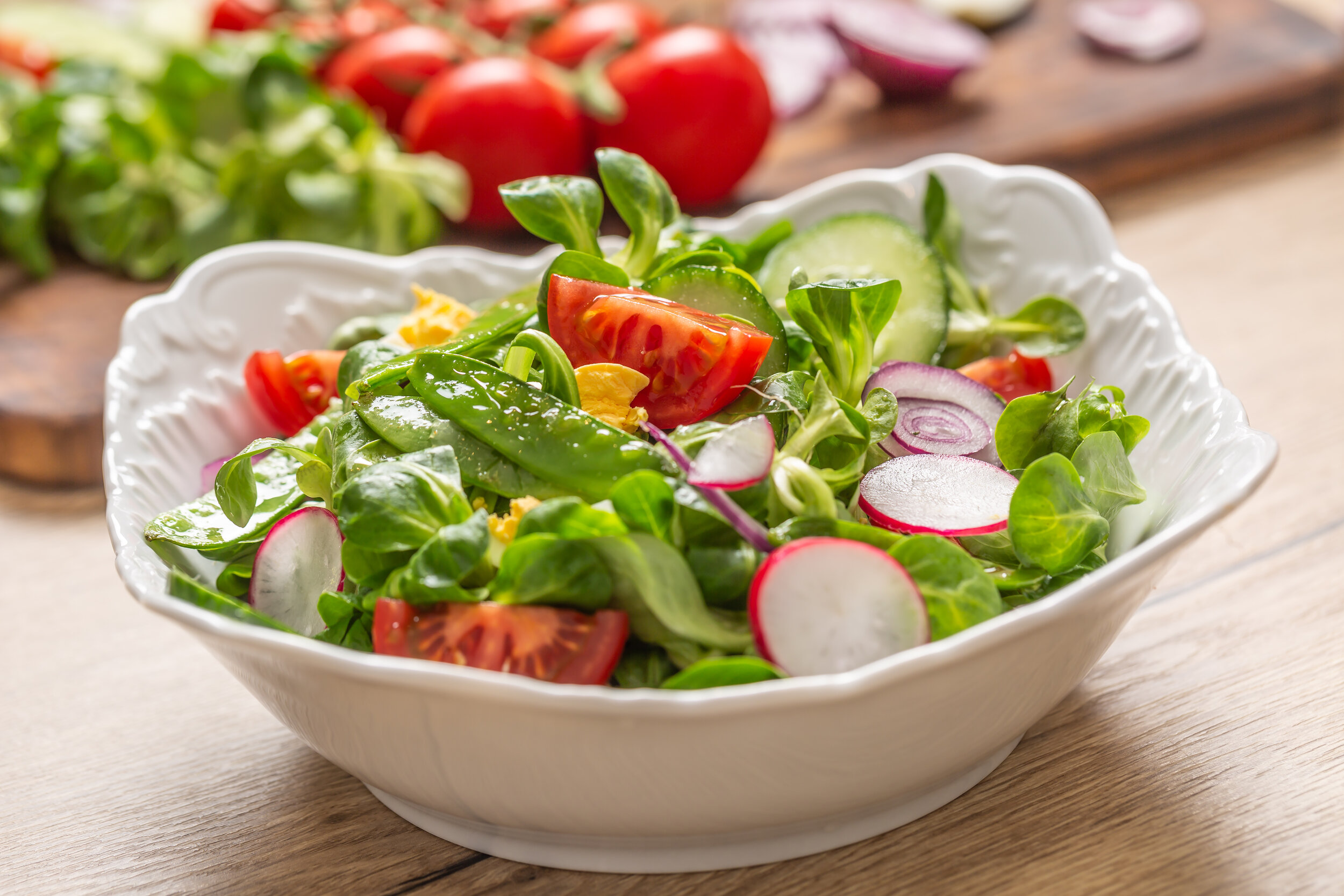The Salad Lover's Garden

One of my favorite dishes is a great bowl of salad. But salads made of greens that have traveled far to get to my local grocery store are not as good as locally grown salad. That was brought home to me last week when we picked up our first CSA share of salad greens, arugula and spinach.
The first night we had a simple salad of greens with a seeds and nuts topper and a vinaigrette dressing. For the next few days we had spinach salads with hot bacon dressing, harking back to the first spinach salad crazes of the 1970s.
Tonight we’ll be using some of the remaining salad greens to make Utica Greens, a great recipe found in the NYTimes Cooking section.
So, now I’m thinking ahead to what I can do this winter to increase the amount of greens that we can have locally grown once our CSA shuts down for the winter. It was back to the books and I found a treasure - The Salad Lover’s Garden by Sam Bittman. This book has been around for a while as we’ve done our on and off vegetable gardening (you can tell by the coffee stains on the edge of the pages as well as the 1992 publication date.)
What I especially love about this book is its wide ranging discussion of the ingredients that may be used in a salad. (Note: Bittman warns that space limitations keep him from discussing all the types of greens you can grow, but he definitely has enough options to get you started plus a list of recommended varieties.)
So what can you expect to learn about in this book. Here are the subjects Bittman covers:
Lettuces
Chicories/Radicchio
Belgian Endive
Endive and Escarole
Spinach
Arugula
Celtuce
Chard
Cresses
Dandelions
Mache
Shungiku
Mustard Greens
He also includes plants for crunch in salads which can be carrots, celery, radishes, sweet fennel, cucumbers, broccoli, cauliflower and peppers. Other salad additions include classics like onions and tomatoes. And no salad book would be complete without a run through some of the classic salad herbs, which can also be used in omelets, soups, stews and sauces. There’s also a section on cabbage and members of the cabbage family, like Brussel sprouts.
There’s also lots of good information on preparing a garden plot, selecting seeds and deciding what to grow but what I am focused on is container gardening and Bittman covers this too. Our blustery winter temperatures here in Northern Michigan preclude any type of outdoor gardening from October to May, so my hopes for salad greens this winter will have to focus on what I can do inside.
If you only chose one book to read on vegetable gardening — not likely in our house — you’ll learn growing techniques, how to plant, succession planting, container gardening, compositing and fertilizing.
One caveat: since the book was published in 1992 there have been changes in our approaches to pest control so I would look for advice online to update what is in the book (be sure your online advice comes from a research institution like a land-grant university and their extension department or websites like The Garden Professors, which are written by horticulture educators with solid science and research backgrounds.) But the information on laying out a garden and on selecting tools and the basics of growing is great as well as the instruction on the care of salad crops is useful information.
If you’re interested in having more great salads this summer this is a great book to read and learn from. You can find it on Amazon by clicking the Buy on Amazon button on the product photo below.
Note: As an Amazon Associate I earn from qualifying purchases. The Amazon Services LLC Associates Program is an affiliate advertising program designed to provide a means for sites to earn advertising fees by advertising and linking to amazon.com.
Vice President, Due North Marketing Communications Inc.




